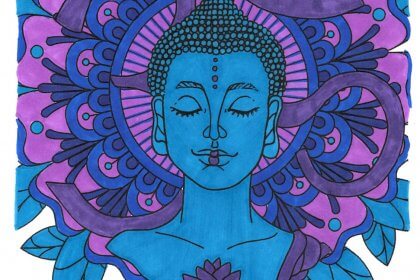The noble orctuple way speaks of a revelation declared by the Buddha himself after two months of meditation in solitude and explains that life goes hand in hand with suffering.
However, it still has a cause that can be treated and alleviated so that it can transcend and move forward in peace, for this it is necessary to implement eight very specific rules.
- If one thing Buddhism and psychology have in common is their goal of alleviating suffering.
- Especially if we look at many of their practices.
- Approaches and strategies.
- We will see how these kinds of traditions lie between spirituality.
- Philosophy and religion.
- Have inspired many of the techniques used by modern psychology.
Dr. Alan Wallace of the University of San Diego has published an interesting study in the journal American Psychological Associaton, in which he examines the great benefits of bringing the two disciplines closer.
Thus, by building bridges between Buddhism and psychology, we promote a mental balance and a more positive emotional health, certainly what can be seen in many clinics and in the psychological practice of daily life.
Thus, theories as useful as that of the noble orctuple path enunciated by Siddhartha Gautama make it easier, for example, to delve into various aspects related to suffering. It is a principle of personal growth, of overcoming us and of enlightening us, which can be of great help.
? Is pain inevitable, suffering is optional? -Bouddha-
The noble octuple path is part of the so-called four noble truths of suffering. After these two months of complete isolation and meditation, Buddha returned with the security that he had attained enlightenment.
First, in order to gain access to such knowledge, he had to understand and overcome suffering. This subtle but ever-present veil among us is perhaps our eternal source of unease and unhappiness.
In this way, Buddha founded much of the practice of his philosophy by transmitting to others the 4 truths of suffering. According to this line of thought, once we can address the root of these internal problems, we will be able to heal and attain enlightenment. through the noble octuple path: eight strategies to understand and practice daily.
Therefore, to begin this path of healing, the first step is to delve into the four truths of suffering.
“What are you going to do, what are you going to do from now on?. – Bouddha-
Let’s look at them
The eight parts of the path to liberation are grouped into three pillars of Buddhist practice itself, so, in a way, they also relate greatly to many others of these psychological perspectives based on humanism or positive approaches.
Thus, the three dimensions that structure the noble path of the octuple are correct behavior, mental discipline and wisdom.
Buddha spoke of this practice in all his speeches, considered it essential in his philosophy, a legacy to transmit to his loved ones and to humanity itself, so let us see what this path is about.
In conclusion, as we can see, this theory, lesson or principle of spiritual growth is very inspiring, taking it as a reference or as an exercise in reflection can be of great use in improving our quality of life, it is worth a try!

